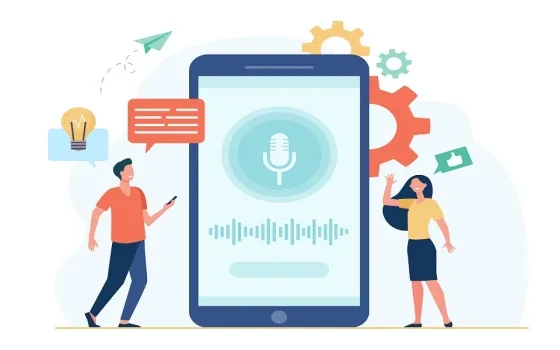In 2025, custom podcast app development is essential for building a platform that stands out in the competitive podcasting market. Whether you aim to create a user-friendly interface, integrate AI-powered recommendations, or scale your app to handle millions of users, the right technology stack is crucial. A custom podcast app can provide personalized features, enhanced user experience, and advanced analytics tailored to your specific needs. In this blog, we’ll explore the critical technologies and strategies you need to build a scalable and feature-rich custom podcast app development that meets user expectations and stands the test of time.
1. Choosing the Right Tech Stack for Scalability
The first step in developing a scalable podcast app is choosing the right tech stack. Your choice of programming languages, frameworks, and cloud services can make or break the app’s ability to scale. In 2025, the demand for high-performance, real-time services and seamless cross-platform compatibility has made some technologies stand out.
Frontend Technologies: React Native and Flutter
For building a podcast app that works across multiple platforms (iOS, Android, Web), React Native and Flutter are two of the most popular cross-platform frameworks. Both provide a seamless development experience, allowing you to write a single codebase that can be deployed across different platforms without compromising performance.
- React Native offers a large ecosystem and native-like performance, making it an ideal choice for apps that need high interactivity, like podcast players.
- Flutter, backed by Google, is known for its beautiful UI components and smooth animations. It is also becoming a popular choice due to its ability to deliver consistent performance across different devices.
By opting for these frameworks, you ensure your app has a responsive, modern interface while saving on development time and costs.
Backend Technologies: Node.js and Python
The backend handles everything from storing podcast episodes to managing user accounts and tracking analytics. Node.js is an excellent choice for building scalable, high-performance applications due to its non-blocking architecture, which allows it to handle multiple concurrent requests efficiently.
For complex data analysis, content management, or advanced features, Python can be a good choice. It offers extensive libraries for machine learning (such as TensorFlow and PyTorch) and data handling (like Pandas and NumPy), which can be useful for podcast recommendations and personalization features.
2. Cloud Infrastructure for Scalability
One of the most crucial decisions in podcast app development is how to host your data and media files. Given the sheer volume of content that will be uploaded to the platform, scalability is a top priority. Cloud infrastructure allows you to scale up or down quickly and efficiently.
Cloud Storage: Amazon S3 and Google Cloud Storage
For podcast media files, Amazon S3 or Google Cloud Storage offer reliable and scalable solutions. These services store your audio files securely and allow users to stream content with minimal buffering or downtime. These platforms also come with built-in features like file versioning and encryption, ensuring data integrity and security.
Content Delivery Networks (CDNs)
To reduce latency and improve download and streaming speeds, integrating a CDN is essential. CDNs like Cloudflare, Akamai, or AWS CloudFront distribute content across a network of servers worldwide, ensuring that users can access podcast episodes quickly, no matter their geographic location.
By using a CDN, your podcast app can serve millions of users while maintaining smooth and uninterrupted playback, even during traffic surges.
3. Database Architecture: Relational vs. NoSQL
For handling user data, podcast metadata, and analytics, choosing the right database is essential for scalability.
- Relational Databases (SQL) like PostgreSQL or MySQL are ideal for structured data, such as user profiles, subscriptions, and payment records. They are great for handling complex queries and ensuring data integrity.
- NoSQL Databases, like MongoDB or Cassandra, are better suited for handling large, unstructured data, such as podcast episodes, comments, or user engagement metrics. NoSQL databases scale horizontally, meaning you can easily add more nodes to distribute the load as your app grows.
For a truly scalable podcast app, you may want to implement a hybrid database architecture, utilizing both SQL and NoSQL databases for different aspects of your app.
4. Advanced Features with Machine Learning
In 2025, a podcast app that doesn’t leverage AI and machine learning might struggle to stand out. Personalized recommendations, advanced search algorithms, and dynamic playlist generation are features that tech-savvy listeners expect. Here’s how AI and ML can play a pivotal role in building a more engaging podcast platform:
Personalized Podcast Recommendations
Machine learning algorithms can analyze user behavior—such as episodes listened to, time spent on specific topics, and even user ratings—to deliver personalized recommendations. Collaborative filtering and content-based filtering are common ML techniques used to suggest podcasts based on user preferences or similar listeners' behavior.
Speech-to-Text and Search Functionality
By using speech recognition tools like Google Cloud Speech-to-Text or Amazon Transcribe, your podcast app can automatically generate transcriptions of episodes, making them searchable. This would allow users to search not just by title or keywords, but by the actual content of the podcast episode itself.
Voice Assistants and Smart Features
Integrating voice assistants (like Alexa, Google Assistant, or Siri) can provide users with hands-free control over their listening experience, allowing them to search for, play, pause, or skip episodes with voice commands.
5. Security and Privacy Considerations
Data privacy is one of the most important aspects of app development in 2025. With stringent regulations like GDPR and CCPA, your podcast app must be designed to protect user data.
- End-to-End Encryption: Ensure that all user data and content uploaded by podcast creators are encrypted both in transit and at rest.
- Authentication and Authorization: Use OAuth 2.0 or JWT for secure user authentication and ensure proper access control for different levels of users (e.g., admins, creators, and listeners).
- Data Privacy Compliance: Your app should have transparent privacy policies, allowing users to manage their data preferences easily.
6. Scalability with Microservices Architecture
For large-scale podcast apps, microservices architecture is highly recommended. This approach divides the app into smaller, independent services that can be deployed and scaled separately. For example, one microservice could handle user authentication, another could manage podcast uploads, and another could be in charge of streaming and media playback.
Microservices make it easier to scale specific parts of your app when needed, without affecting the rest of the platform. This architecture also enables faster development and easier maintenance as your app grows.
7. Continuous Monitoring and Performance Optimization
Even with a solid tech stack and cloud infrastructure, your work doesn’t stop after launch. To maintain scalability, you must continuously monitor performance and optimize resources.
Analytics Tools and Logging
Incorporating real-time analytics with tools like Google Analytics, Firebase, or AWS CloudWatch can provide valuable insights into app performance, user behavior, and potential issues that need attention. This helps in proactive scaling and resource allocation.
Load Balancing
As your podcast app scales, you’ll need to implement load balancing to evenly distribute traffic across multiple servers. This ensures that no single server gets overloaded, reducing the risk of downtime or slow performance.
Conclusion
Building a scalable podcast app in 2025 requires a combination of cutting-edge technologies, cloud infrastructure, and a user-centered approach. From selecting the right tech stack to implementing machine learning for personalization, every aspect of your app needs to be optimized for growth. With the right tools and strategies, you can create a podcast app development cost that not only delivers a seamless experience but is capable of handling millions of users while evolving with emerging trends in the tech landscape. By focusing on scalability from the start, you'll ensure that your podcast app can grow along with your audience.















